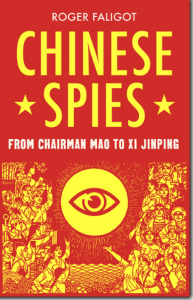
Guoanbu now the most powerful in the world?


Roger Faligot exposes the sprawling octopussy of the world’s intelligence service, from the very birth of communist China to Xi Jingping’s absolute control today.
The concerted efforts to block, squeeze and punish the China’s technology industry is an important and fundamental shift in the US policy shift with China and lurched into deeper confrontation.
Some decade ago Washington once hoped to shape China’s rise, but now it is working to bamboozle it.
The mercantilist mindset of the US administration and insecurities of a section of Washington’s foreign policy established is to be blamed as they are searching for new demons to eliminate.
The growing competition between Washington and Beijing is not the immediate subject of Roger Faligot’s history of Chinese intelligence but the aggressive intelligence and surveillance capabilities that China has installed.
Faligot explains how the Chinese Communist Party and its efforts to develop the largest intelligence service in the world, the state security ministry known as the Guoanbu, the biggest non-military spying agencies.
Guoanbu has surpassed in the Twenty first century the MI6, CIA and KGB of the Twentieth century.
Faligot a French journalist and longtime China watcher, has an encyclopedic knowledge of the history of China’s spy agencies.
Spying is in the essential fabric of the Chinese Communist party since 1920s Shanghai, where colonial powers, gangsters and nationalist groups were vying for influence.
China premier from 1949 to 1976, Zhou Enlai, whose early career known for his diplomatic skills he demonstrated in the Second World War, was also developed a taste for Clandestine activities as a young man in his twenties in Paris mixing with exile like Deng Xiaoping, and avoided attention of the French authorities by living under the name Stephen Knight, with a British passport and claimed to be a Hong Kong businessman. Returning to China in 1928 after a spell of GRU spy school in Lenin Hills outside Moscow, Zhou established a series of spy network, which according to Faligot has direct links with “today’s service”.
China’s rapid growth and its more advanced intelligence capabilities over the past two decades is chronicled in the chapters on contemporary events. China’s spy agencies latched on to the internet – both as a powerful weapon and as a tool for greater social control.
Faligot details formidable cyber war capabilities that China has developed that allowed it to continue a global battle of intrusion, hacking, virus infection and spam bombing of foreign websites and databanks.
In 2005, when executives at Japanese firms Mitsubishi and Sony arrived at work to discover anti-Japanese messages and the Chinese flag embedded on their websites. The Guoanbu has been responsible for masterminding the theft of digital technology from other countries.
The Guoaonbu has also the mission to organise a vast system of control of the Chinese population, as new technologies were first developed in Xinjiang and Tibet, including compulsory registration of internet users, which has been used to root out cyber-dissidents.
Several Chinese students who have graduated from the IT faculties of American universities were then hired by the Guoanbu to develop this virtual Great Wall. The capabilities have bow been harnessed by one all-powerful leader. The history of China’s intelligence services over the past decade is also the story of how Xi Jinping has come to hold usch enormous sway provoking nervous reaction in Washington.
Xi Jinping conducted an intrusive anti-corruption drive whose biggest scalp was Zhou Yongkang, who in 2015, became the first ever former member of politburo standing committee to be convicted of serious crimes and sentenced to life in prison. The purge of the old Zhou Yongkang system Faligot concludes, allowed Xi to retake control of the CCP, the PLA nad the secret services.
Chinese Spies: From Chairman Mao to Xi Jinping by Roger Fallgot, Translated by Natasha Lehrer, Hurst £30, 568 pages.
